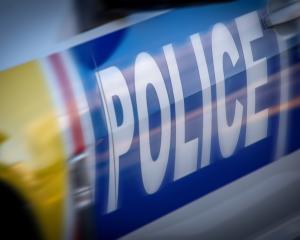
Otago Regional Council chairwoman Marian Hobbs wrote, in her governance report tabled at the end of January, that despite significant improvements in noise pollution levels "there are still significant issues about air quality" in the seaside village because of port operations.
And in an interview following Ms Hobbs’ statement, Mr Winders said new regulations that came into force this year were expected to have a positive effect on air quality in the area, but the planned on-site monitoring, still in the early stages, could serve to allay the concerns of some in the community.
"We’ve kicked off that project ourselves," he said.
"Once we understand the particulates and the levels, that will give us a pretty good idea of the impact on the community — and it could be very minor."
Ms Hobbs said while the report was tabled at the council meeting last month it expressed her personal views "as a human being".
The former minister for the environment and current Careys Bay resident said she had not realised ports were exempted from air quality until just two months ago and it was a source of embarrassment for her.
Council air quality scientist Sarah Harrison said some temporary measuring of smaller particulates, known as PM2.5, had been completed at the port in 2013 and the council was looking into the possibility of further work there in the future.
But the nearest air quality monitoring station was in Albany St, in Dunedin.
A Cruise Lines International Association spokesman said there was an "enormous amount happening" regarding air quality in the industry.
On January 1, new sulphur emissions standards were introduced worldwide.
In 2018, the association announced a global cruise industry pledge to reduce the rate of carbon emissions across the industry fleet by 40% by 2030.
In total, association cruise lines worldwide had invested more than $US22billion ($NZ34billion) in ships with new, energy-efficient technologies and cleaner fuels.
Worldwide, 68% of association cruise line ships used exhaust gas cleaning systems to meet or exceed air emission requirements.
A Ministry for the Environment spokeswoman said the Resource Management (Marine Pollution) Regulations 1998 treated the discharge of contaminants in the coastal marine area derived from exhaust as permitted.
Although New Zealand was only in the process of signing up to a new shipping pollution convention, which sets air emissions limits to reduce marine pollution from shipping, any international ships in New Zealand waters flagged to states that were already party to the agreement must comply with the limits it set.
Comments
Here are some facts; The world’s largest luxury cruise operator, emitted nearly 10 times more sulphur oxide (SOX) around European coasts than did all 260 million European cars in 2017.
Of total global air emissions, shipping accounts for 18 to 30 percent of the nitrogen oxide and 9% of the sulphur oxides. Sulfur in the air creates acid rain which damages crops and buildings. When inhaled, sulfur is known to cause respiratory problems and even increases the risk of a heart attack.
Air pollution from cruise ships is generated by diesel engines that burn high sulfur content fuel oil, also known as bunker oil, producing sulfur dioxide, nitrogen oxide and particulate, in addition to carbon monoxide, carbon dioxide, and hydrocarbons.
Air pollution monitoring needs to be not in the port but out side the police station on George St. where most people actually breath the air. It needs to measure at least sulfur dioxide and PM2.5. Be connected to Wi-Fi so that live results can be viewed via internet by all. A quality device costs about $300. The monitor in Albany St. only measure PM10 and even failed to pick up on the recent air pollution caused my the Ozzy bushfires.
About time this dirty business was investigated. How many fat cats are profiting from the blacken lungs of our children. The science and research speaks for itself. I was in port charms last week and the sky was toxic. Buses like ants ferrying the passengers and the smoke pouring out of the ship.
The university should conduct the testing but they are too weak to stand up to big business.
Good comments Pat and Otagooldie. It;s well overdue, time we start to discuss this. A sensitive discussion actually, as a large proportion of our economy depends on these ships. Valued jobs and continuing prosperity are at stake. These ships burn huge amounts of fuel, the open sea dumping of volumes of waste would make your eyes water. And it's all because people want to gad about looking at 'Clean/Green; places. However, the pollution and burning off precious fossil fuels can't continue. A massive amount of money is generated from these beasts, there should be a sense of urgency and effective solutions for propulsion and pollution untertaken by the shipping companies and manufacturers. Falling to address this appalling enviromental problem will lead to a potential collapse in the industry and economies that are directly dependant on this type of tourism. Modern society will not continue to tolerate the current situation at the expence of our health and resources. For the shipping companies, the time to act is now, before civil pressure and environmentalists get a sniff of the air and decry the dumpings at sea. I'd hate to be a fish! The menu is appalling these days.











